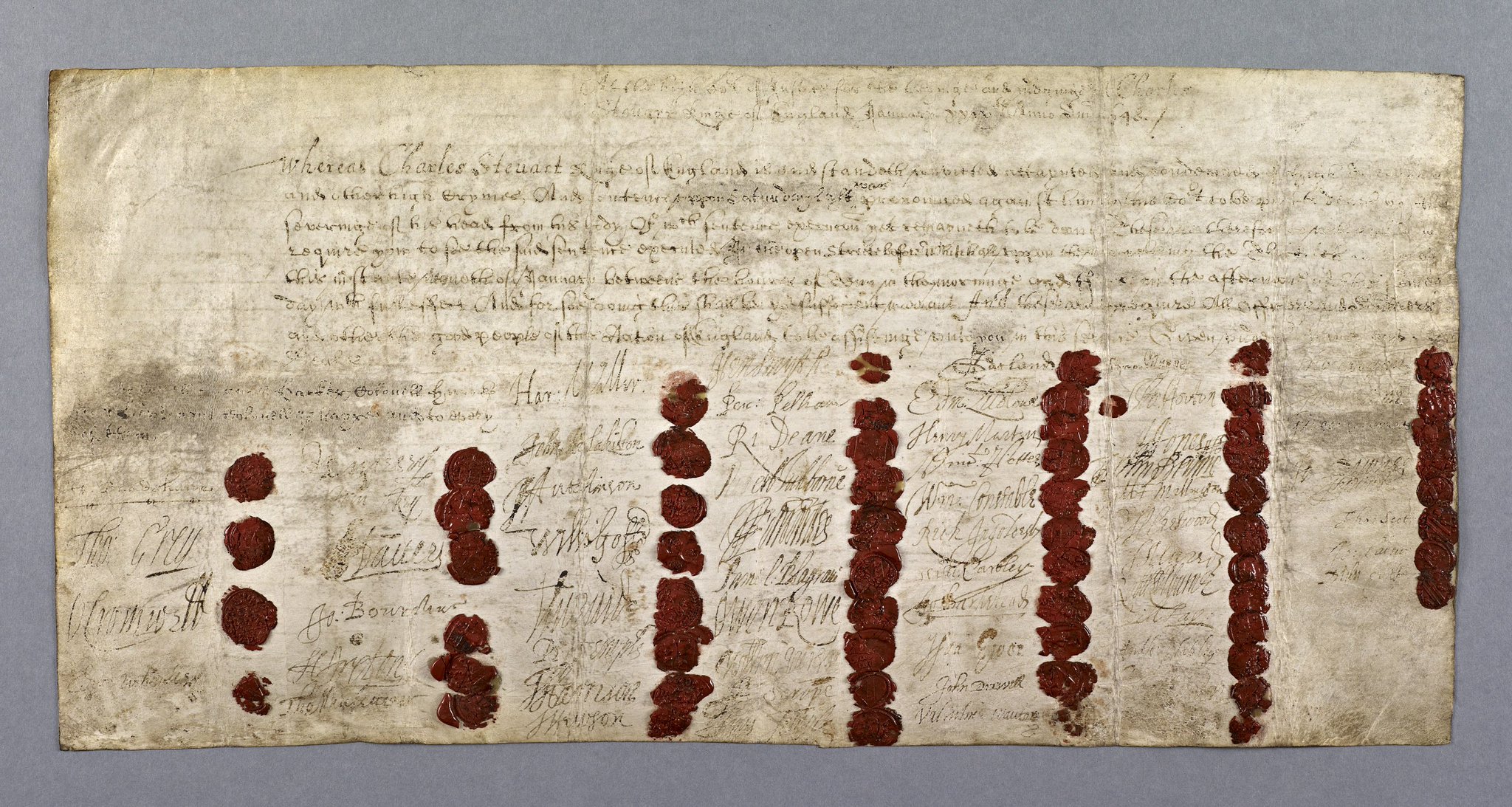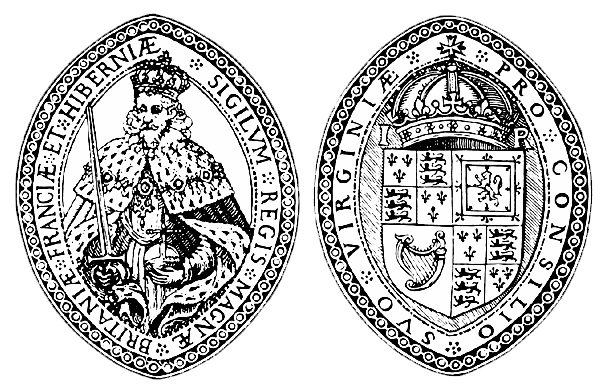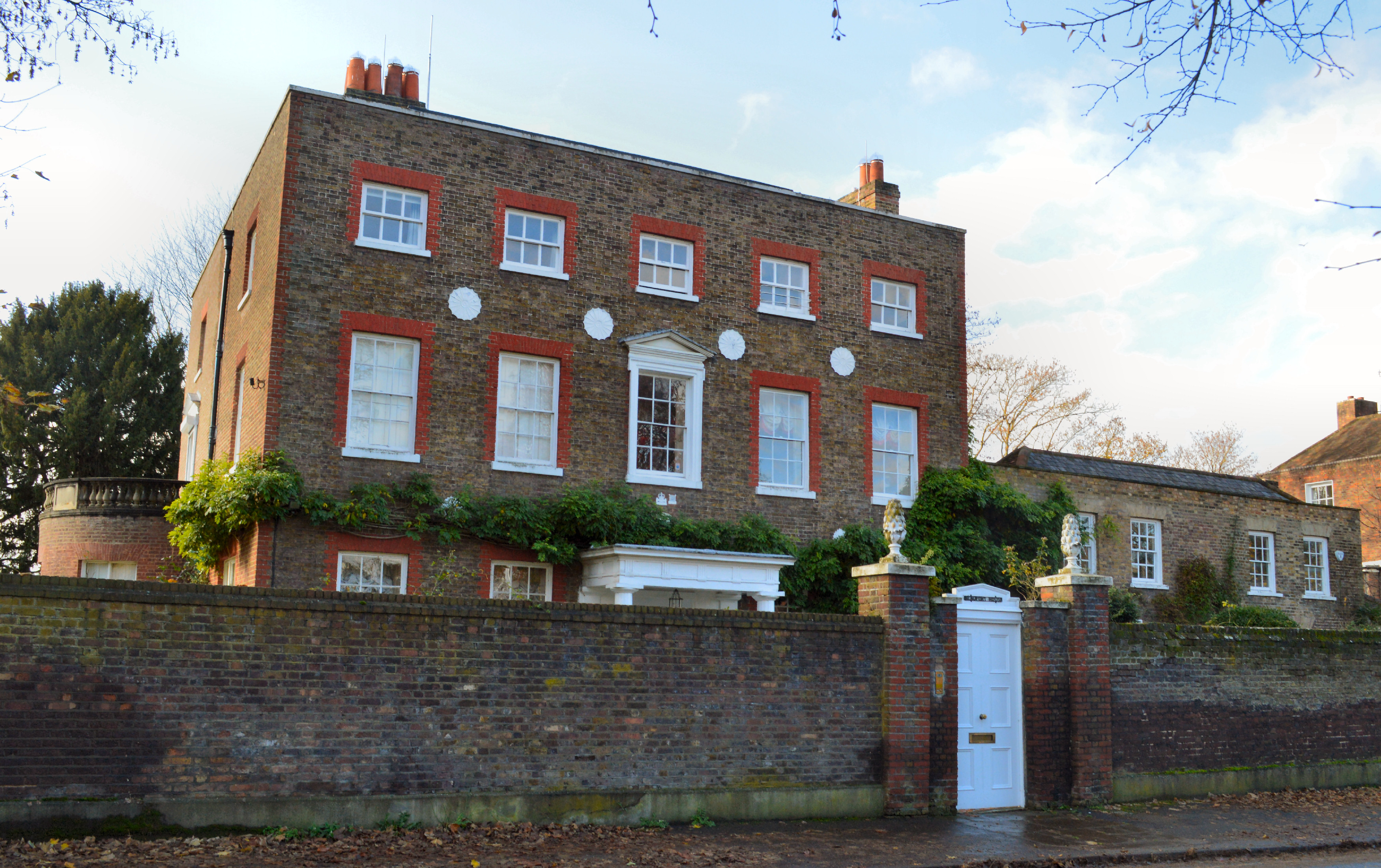|
John Danvers
Sir John Danvers (c. 1585–buried 28 April 1655) was an English courtier and politician who was one of the signatories of the death warrant of Charles I. Life Danvers was the third and youngest son of Sir John Danvers of Dauntsey, Wiltshire, by Elizabeth Neville. In his youth, he travelled through France and Italy, developing sophisticated tastes in gardening and architecture, which in later life he indulged at his house in Chelsea. In 1597 he entered the University of Padua as a student, prior to returning to England where he carried on his education at Winchester College (entered 1598), Brasenose College, Oxford (entered 1601) and Lincoln's Inn where he was a law student in 1612. Danvers was knighted by James I of England on 3 March 1609; and under Charles I became a gentleman of the privy chamber. He sat as a member of parliament for Arundel in 1610, Montgomery Boroughs in the Addled Parliament of 1614, Oxford University in 1621, Newport (Isle of Wight) in 1624 and aga ... [...More Info...] [...Related Items...] OR: [Wikipedia] [Google] [Baidu] |
Execution Warrant
An execution warrant (also called death warrant or black warrant) is a writ that authorizes the execution of a condemned person. An execution warrant is not to be confused with a " license to kill", which operates like an arrest warrant but with deadly force instead of arrest as the end goal. United States In the United States either a judicial or executive official designated by law issues an execution warrant. This is done when a person, in trial court proceedings, has been sentenced to death, after trial and conviction, and usually after appeals are exhausted. Normally when a death warrant is signed and an execution date is set, the condemned person is moved from his or her death row cell to a death watch cell, which is typically located adjacent to the execution chamber. Usually, the government agency charged with carrying out an execution, normally the state's Department of Corrections or the Federal Bureau of Prisons in federal cases, has a limited time frame, norm ... [...More Info...] [...Related Items...] OR: [Wikipedia] [Google] [Baidu] |
Virginia Company
The Virginia Company was an English trading company chartered by King James I on 10 April 1606 with the object of colonizing the eastern coast of America. The coast was named Virginia, after Elizabeth I, and it stretched from present-day Maine to the Carolinas. The company's shareholders were Londoners, and it was distinguished from the Plymouth Company, which was chartered at the same time and composed largely of gentlemen from Plymouth, England. The biggest trade breakthrough resulted after adventurer and colonist John Rolfe introduced several sweeter strains of tobacco from the Caribbean. These yielded a more appealing product than the harsh-tasting tobacco native to Virginia. Cultivation of Rolfe's new tobacco strains produced a strong commodity crop for export for the London Company and other early English colonies and helped to balance a national trade deficit with Spain. The company failed in 1624, following the widespread destruction of the Great Massacre of 1622 by in ... [...More Info...] [...Related Items...] OR: [Wikipedia] [Google] [Baidu] |
West Lavington, Wiltshire
West Lavington is a village and civil parish in Wiltshire, England, on the north edge of Salisbury Plain, on the A360 road between Devizes and Salisbury, about south of Devizes. The parish includes the hamlet of Littleton Panell. The parish was formerly known as Bishops' Lavington, the land having been granted to Roger, Bishop of Salisbury in 1136, and remaining in the hands of the bishopric throughout the Middle Ages. History Domesday Book has two entries for ''Laventone'', in the area of the present Market Lavington and West Lavington; these had a combined population of 38 households. A further 25 households were recorded at ''Liteltone'', corresponding to Littleton Pannell. Although Domesday does not mention a church or priest, tithes from West Lavington church (together with that at Potterne) are mentioned in 1091, and later endowed a prebendary at Salisbury Cathedral. From 1136, Bishops of Salisbury held land at West Lavington, sometimes considered to be part of their ... [...More Info...] [...Related Items...] OR: [Wikipedia] [Google] [Baidu] |
Market Lavington
Market Lavington is a civil parish and large village with a population of about 2,200 on the northern edge of Salisbury Plain in Wiltshire, England, south of the market town of Devizes. The village lies on the B3098 Westbury–Urchfont road which skirts the edge of the Plain. The parish includes the hamlets of Northbrook, Lavington Sands and Fiddington Sands. History There was a Roman settlement near the present parish church, which was followed by a Saxon settlement, including a cemetery which was used in the 5th to 7th centuries. Thus the area was continuously occupied from the late Roman period until the establishment of the medieval planned town in the 13th century. The archaeology was assessed in advance of housebuilding to the northwest of the church in 1991–5, and building of the community centre and car park southwest of the church in 2006. Domesday Book has two entries for ''Laventone'', with a large combined population of 38 households, 12 acres of woodland and ... [...More Info...] [...Related Items...] OR: [Wikipedia] [Google] [Baidu] |
Beaufort House
Beaufort House is an 18th-century grade II listed house in Ham, near Richmond, Surrey. History Beaufort House was built in about 1780. It was originally the dower house to Ham House. In about 1855, a private Catholic girls school moved to Beaufort House. In 1856, St Mary's Catholic Chapel was set up in its grounds, with a separate entrance for the public, and closed in 1870, when the school moved to Notting Hill. The house was listed grade II in 1983. Notable residents Lady Juliana Fermor Penn lived there until her death in 1801. Admiral Sir William Parker, 1st Baronet, of Harburn died in 1802 at Beaufort House, which was his country estate when he was not living at 12 Crooms Hill, Greenwich. In 1901, Dr William Simpson Craig (1822-1893), the father of the psychiatrist Sir Maurice Craig and politician Norman Craig was living there, as was Norah Palmer Holroyd, an ancestor of Michael Holroyd. From 1907 to 1920, Craig's son-in-law, Dr Macnamara (and his wife) lived there. ... [...More Info...] [...Related Items...] OR: [Wikipedia] [Google] [Baidu] |
Sir Thomas More
Sir Thomas More (7 February 1478 – 6 July 1535), venerated in the Catholic Church as Saint Thomas More, was an English lawyer, judge, social philosopher, author, statesman, and noted Renaissance humanist. He also served Henry VIII as Lord High Chancellor of England from October 1529 to May 1532. He wrote ''Utopia'', published in 1516, which describes the political system of an imaginary island state. More opposed the Protestant Reformation, directing polemics against the theology of Martin Luther, Huldrych Zwingli, John Calvin and William Tyndale. More also opposed Henry VIII's separation from the Catholic Church, refusing to acknowledge Henry as supreme head of the Church of England and the annulment of his marriage to Catherine of Aragon. After refusing to take the Oath of Supremacy, he was convicted of treason and executed. On his execution, he was reported to have said: "I die the King's good servant, and God's first". Pope Pius XI canonised More in 1935 as a martyr. ... [...More Info...] [...Related Items...] OR: [Wikipedia] [Google] [Baidu] |
John Aubrey
John Aubrey (12 March 1626 – 7 June 1697) was an English antiquary, natural philosopher and writer. He is perhaps best known as the author of the ''Brief Lives'', his collection of short biographical pieces. He was a pioneer archaeologist, who recorded (often for the first time) numerous megalithic and other field monuments in southern England, and who is particularly noted for his systematic examination of the Avebury henge monument. The Aubrey holes at Stonehenge are named after him, although there is considerable doubt as to whether the holes that he observed are those that currently bear the name. He was also a pioneer folklorist, collecting together a miscellany of material on customs, traditions and beliefs under the title "Remaines of Gentilisme and Judaisme". He set out to compile county histories of both Wiltshire and Surrey, although both projects remained unfinished. His "Interpretation of Villare Anglicanum" (also unfinished) was the first attempt to compile a f ... [...More Info...] [...Related Items...] OR: [Wikipedia] [Google] [Baidu] |
English Council Of State
The English Council of State, later also known as the Protector's Privy Council, was first appointed by the Rump Parliament on 14 February 1649 after the execution of King Charles I. Charles' execution on 30 January was delayed for several hours so that the House of Commons could pass an emergency bill to declare the representatives of the people, the House of Commons, as the source of all just power and to make it an offence to proclaim a new King. This in effect abolished the monarchy and the House of Lords. History The Council of State was appointed by Parliament on 14 and 15 February 1649, with further annual elections. The Council's duties were to act as the executive of the country's government in place of the King and the Privy Council. It was to direct domestic and foreign policy and to ensure the security of the English Commonwealth. Due to the disagreements between the New Model Army and the weakened Parliament, it was dominated by the Army. The Council held its fi ... [...More Info...] [...Related Items...] OR: [Wikipedia] [Google] [Baidu] |
Anthony Hungerford (Royalist)
:''Hungerford should not be confused with his namesake and contemporary, the Parliamentarian Colonel Anthony Hungerford'' Anthony Hungerford of Black Bourton (1607/08–1657), was an English Member of Parliament who supported the Royalist cause during the English Civil War. Biography Anthony Hungerford was the son, by his second marriage, of Sir Anthony Hungerford of Black Bourton (1564–1627), and half-brother of Sir Edward Hungerford (1596–1648). Anthony Hungerford was elected in 1640 to both the Short and Long parliaments as a member of Malmesbury. As a royalist, he sat in the king's Oxford Parliament during its first session from December 1643 to March 1644. He was heavily fined for his delinquency by the Long Parliament and was committed to the Tower of London in 1644. He was apparently at liberty in October 1644. According to a statement which he drew up in 1646, to excuse himself from paying the fine imposed on him, he never took up arms for the king: went after t ... [...More Info...] [...Related Items...] OR: [Wikipedia] [Google] [Baidu] |
Malmesbury (UK Parliament Constituency)
Malmesbury was a parliamentary borough in Wiltshire, which elected two Members of Parliament (MPs) to the House of Commons from 1275 until 1832, and then one member from 1832 until 1885, when the borough was abolished. History The borough was represented in Parliament from 1275. The constituency originally returned two members, but representation was reduced to one in the Great Reform Act of 1832 until the constituency was finally abolished in 1885. In the 17th century the constituency was dominated by the Earls of Suffolk, based in the family seat at nearby Charlton Park. Members of Parliament MPs 1275–1508 ''From History of Parliament'' MPs 1509–1558 ''(Source: Bindoff (1982))'' MPs 1559–1603 ''Source:History of Parliament'' MPs 1604–1640 MPs 1640–1832 MPs 1832–1885 Election results Elections in the 1830s Elections in the 1840s Elections in the 1850s Ele ... [...More Info...] [...Related Items...] OR: [Wikipedia] [Google] [Baidu] |
Colonel (United Kingdom)
Colonel (Col) is a rank of the British Army and Royal Marines, ranking below brigadier, and above lieutenant colonel. British colonels are not usually field commanders; typically they serve as staff officers between field commands at battalion and brigade level. The insignia is two diamond-shaped pips (properly called "Bath Stars") below a crown. The crown has varied in the past with different monarchs; Elizabeth II's reign used St Edward's Crown. The rank is equivalent to captain in the Royal Navy and group captain in the Royal Air Force. Etymology The rank of colonel was popularized by the tercios that were employed in the Spanish Army during the 16th and 17th centuries. General Gonzalo Fernández de Córdoba divided his troops in to ''coronelías'' (meaning "column of soldiers" from the Latin, ''columnella'' or "small column"). These units were led by a ''coronel''. This command structure and its titles were soon adopted as ''colonello'' in early modern Italian and in Mi ... [...More Info...] [...Related Items...] OR: [Wikipedia] [Google] [Baidu] |
Short Parliament
The Short Parliament was a Parliament of England that was summoned by King Charles I of England on the 20th of February 1640 and sat from 13th of April to the 5th of May 1640. It was so called because of its short life of only three weeks. After 11 years of attempting Personal Rule between 1629 and 1640, Charles recalled Parliament in 1640 on the advice of Lord Wentworth, recently created Earl of Strafford, primarily to obtain money to finance his military struggle with Scotland in the Bishops' Wars. However, like its predecessors, the new parliament had more interest in redressing perceived grievances occasioned by the royal administration than in voting the King funds to pursue his war against the Scottish Covenanters. John Pym, MP for Tavistock, quickly emerged as a major figure in debate; his long speech on 17 April expressed the refusal of the House of Commons to vote subsidies unless royal abuses were addressed. John Hampden, in contrast, was persuasive in private: he s ... [...More Info...] [...Related Items...] OR: [Wikipedia] [Google] [Baidu] |


.jpg)




